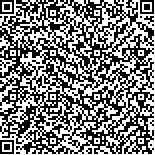| 摘要: |
| 研究海洋污损生物藤壶(Barnacle)不同生长阶段附着强度,可为科学制定藤壶清除规范及设计相关机械设备提供依据。本文采用浸泡法在湛江调顺岛(21°31'N,110°41'E)实海中挂板,结合形貌观察藤壶生长过程,利用自行设计的剪切强度测试装置,选取网纹藤壶测试不同生长阶段剪切强度。结果表明:试板浸泡10 d,幼体藤壶开始附着;30 d试板表面藤壶覆盖面积约占30%,基底直径1~6 mm,部分藤壶死亡形成空壳;60 d试板约50%面积被藤壶覆盖,试板表面有覆膜,空壳现象加剧,藤壶基底直径最大达10 mm;90 d试板约95%面积被藤壶覆盖,出现藤壶相叠现象,基底直径1~13 mm。藤壶附着生长过程中,剪切强度变化符合“快-慢”的特点,以藤壶基底直径为变量,构建藤壶剪切强度Logistic增长模型,决定系数R2=0.99,说明模型拟合良好。利用构建的Logistic增长模型将藤壶剪切强度划分为速增期(基底直径4.0~6.4 mm),缓增期(基底直径6.4~8.7 mm)及渐停期(基底直径>8.7 mm)3个阶段。结合藤壶附着生长过程,藤壶在附着后采用机械方式清除的最佳清除时期在速增期。 |
| 关键词: 网纹藤壶(Reticulated barnacle) 生长过程 实验装置 剪切强度 Logistic增长模型 |
| DOI:10.11759/hykx20221104002 |
| 分类号:TG174 |
| 基金项目:广东省海洋装备及制造工程技术研究中心建设资助项目(A16287) |
|
| Study on the growth process and attachment strength of marine-fouling barnacles |
|
LI You-chi1, WANG Gui1, WU Jing-quan1, DENG Pei-chang2, ZHANG Fu-quan1, HUANG Jun-yi1
|
|
1.College of Mechanical Engineering, Ocean University of Guangdong, Zhanjiang 524000, China;2.College of Chemistry and Environment, Ocean University of Guangdong, Zhanjiang 524000, China
|
| Abstract: |
| Studying the adhesion strength of marine-fouling barnacles in different growth cycles can provide a basis for scientifically formulating barnacle removal specifications and designing related mechanical equipment. In this study, the growth process of barnacles was observed through barnacle immersion in a sea on Diaoshun island (21°31'N, 110°41'E) in Zhanjiang, and the shear strength of the barnacles at different growth periods was measured using a self-designed shear test device. The results showed that the barnacle larvae began to attach to the surface of the sample after 10 d of immersion. Barnacles covered ~30% of the sample surface on day 30, and the barnacle diameter was approximately 1-6 mm, and some barnacles died to form empty shells. On day 60,~50% of the sample surface was covered with barnacles, and the surface was covered with a film, which aggravated the formation of empty shells, and the largest barnacle diameter was 10 mm. Approximately 95% of the 90 d sample was covered with barnacles, which overlapped to reach a diameter of 1-13 mm. During the barnacle attachment process, the barnacle shear strength first rapidly increased and then slowly increased with time. A logistic growth model of barnacle shear strength change with the barnacle diameter was established, with the determination coefficient R2=0.99, which indicates that the model fits well. According to the logistic growth model, the change in barnacle shear strength can be divided into three stages:a rapid growth stage (base diameter 4.0-6.4 mm), slow growth stage (base diameter 6.4-8.7 mm), and gradual stop stage (base diameter>8.7 mm). The best period of the mechanical removal of attached barnacles was the rapid increase period. |
| Key words: Reticulated barnacle growth process experimental device shear strength logistic growth model |
